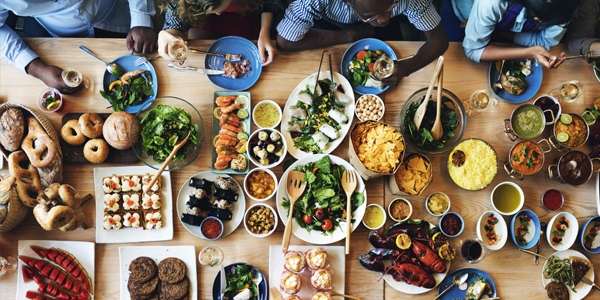Promotional Features
Tapping into trends: Stay competitive with a fresh look at modern consumer behaviour
When it comes to processed and packaged foods, the global market has endured significant disruption over the last few years.
COVID-19, not to mention other issues around the cost of living, climate change, and the war in Ukraine, have reshaped both supply chain logistics and consumer behaviour. Complex, highly interrelated factors drive the latter, but understanding today’s new, key consumer trends is crucial to staying competitive in a highly challenging market.
So, what are some of these trends, and how will they impact your business? Tetra Pak’s 2023 Trendipedia report breaks down three important findings, including the trend drivers, their implications for food producers, and how best to modify your recipes, ingredients, and production processes to take advantage of them.
Smart and adaptive: ‘Life hacks’ and ‘flexi-shopping’
‘Life hacks’ concern brands empowering people to get more for their money and waste less – basically, shopping and cooking smarter. This helps them optimise their spending and simplify their daily routines. The trigger is finding new 'shortcuts' to do things, typically inspired by online communities.
Good value doesn’t only apply to those on a budget. ‘Flexi-shopping’ sees consumers cut back on spending or treat themselves according to the time, place, and value they place on each purchase; it’s all about being mindful of their personal values and the perceived quality of a product.
Ivanka Skrypnichenko, Global Category Manager at Tetra Pak, says: “When it comes to ‘life hacks’, it’s not so much about your recipe per se.
"Food producers should instead lean into food waste, portion size, and the exact grammage of the product. Consumers are all about efficiencies here.”
Certainly, there’s scope for adjusting your formulation though, and giving consumers flexibility in how they prepare products – heating up in an air fryer or microwave, as opposed to an oven, helps consumers save on utilities. “It’s about convenience – recipes should be adaptable for consumers’ new way of living,” adds Skrypnichenko.
Another aspect here is consumers’ desire to eat ‘nose to tail’ with no room for wastefulness, making a virtue from previously unfashionable or cheaper cuts of meat and alternative sources of protein and fibre. But this is not just a question of price. “Even though customers are trading down to products that cost less, they are not compromising on food quality or making the most of our planet's finite resources – they are looking for value behind the price,” says Skrypnichenko.
Optimising your recipe or formulation while still delivering quality is a major challenge when replacing ingredients, and requires production experience and expertise. Local supply can help here – supporting local farmers and producers, and cutting down on your ingredients’ food miles, is a way to both optimise your costs and appeal to consumers’ sense of responsibility.
With ‘flexi-shopping’ and consumers’ desire to purchase both low-cost and premium products, you need to bear in mind their end experience – the stay-at-home mindset champions the ability to make quality, premium dishes at home from great ingredients.
Skrypnichenko notes the growth of e-commerce with food shopping – ordering meal kits online or buying packaged food products in bulk. This gives consumers flexibility in terms of meal planning, storage, and delivery, and makes shelf life a key consideration for your production and packaging.
Climate imperative: ‘Climatarianism’ and ‘green clarity’
Climate-based options are no longer niche – we are more aware than ever of the need to make radical choices and trade-offs in our lives and diets to match our values. Food producers now need to consider their ingredients’ sustainability from the cradle to the grave, and provide sustainability alternatives through food and beverage innovations. Brands that communicate clear, transparent, and meaningful credentials in this space will ensure consumers feel positive about their purchasing decisions.
Your recipes are a great starting place to take advantage of this trend – swapping out traditional ingredients for meat alternatives or plant-based foods, and using alternative proteins, is a good way to satisfy climatarians’ mindset. “Consumers are striving to cut down on their meat consumption, and we’ve seen the rise of not just vegetarianism and veganism – flexitarianism is significant too,” says Skrypnichenko.
This rise is pushing food producers to adapt their formulations and recipes for traditional, existing products, particularly those including meat or fish. But when it comes to meat alternatives in particular – new ingredients designed to mimic current ones – taste, texture, flavour, and aroma are key. “It’s important to come up with solutions that give consumers the best possible experience – if these four aspects are not right, consumers just won’t buy it,” cautions Skrypnichenko.
Innovation is not limited to the creation of meat alternatives or plant-based proteins through new technologies such as fermentation either – there are whole new categories of ingredients ripe for exploration. Some producers have incorporated seaweed in soups and broths, while others are enjoying success adding pea, pulse, and hemp protein to a variety of products; you can even buy cricket-based protein bars.
Another aspect of raw materials is upcycling – the use of ingredients that would otherwise be discarded or go to waste. This could be using perfectly edible fruit and vegetables that have some form of blemish, or repurposing a by-product from one process into a functional ingredient in another; both contribute to the idea of ‘waste not want not’ that consumers want to see from the brands they buy from.
Sourcing your ingredients, their proximity to the supply chain, and how you handle distribution can also play into this trend – the idea of ‘producing local’ can be powerfully persuasive. So, too, is food loss. Skrypnichenko notes that up to one third of a product can be lost during the production stage, so it’s important to focus on efficiencies in your production and take measures to minimise wastage.
Empowerment through diet: ‘In control’ and ‘repair and replenish’
The previous trend is also linked to this one. More than ever, consumers are reassessing their relationship to their own health, and constantly searching for new ways to regain control in their lives. One aspect is being mindful and intentional about their diets – improving their immunity and boosting their energy levels, or turning to health technology solutions that might help them live longer and better.
A deeper sense of wellbeing is key here, too – diets that provide a holistic balance, food that promotes calmness and relaxation, and ingredients possessed of unique functional and health benefits.
With consumers becoming acutely aware of how their daily product choices impact their wellbeing and health, the raw material you base your products on becomes critically important. One of the biggest drivers behind the plant-based trend is the rising awareness of allergies, and people seeking out alternatives. “This gives you the opportunity to explore other ingredients such as soyabean, fungi- or algae-derived products, which are considered vegan,” says Skrypnichenko.
Within certain categories, such as beverages, there is much scope for tapping into the benefits of traditional medicines and remedies. The likes of ginseng from China and ingredients familiar to Ayurvedic medicine from India are experiencing a resurgence; other compounds previously lost to history, such as the Native American yaupon, are also being rediscovered.
These often provide antioxidant, anti-inflammatory and antibacterial activity, as well as regulation of the gut and many other health benefits. Newer ingredients are also prized for their functionality, and not just specifically related to health either. CBD, herbals and adaptogens can provide relief from feeling overwhelmed, and tap into consumers' desire to pause, unwind and recover.
Skrypnichenko notes the importance of ‘plus and minus’ within this trend – that is, the adding, or the removal, of a specific quality in a product. “The plus trend is about added fibre, protein or vitamins, while minus deals with things like lower sugar, reduced fat, and less sodium or salt.
"Such claims add more value for consumers when they are making decisions at the purchase point, and can also help build their trust in particular brands. It’s about demonstrating value through ingredient choice.”
Alongside this, labelling – and the messaging that it conveys – is just as important; this can affect your production processes. Nutrition and health benefits go hand in hand with clean labelling processing methods; the less processed your product, the ‘better’ – healthier, fresher, more natural – consumers perceive it to be. As such, Skrypnichenko says you must strike a balance between processing that gives the best possible taste or end product, and satisfy the demand for more natural foods.
“Really long lists of ingredients, or things that consumers don’t know or recognise, can scare them off,” she says. “This speaks to what you actually put into your product, as well as how you process it.”
Artificial preservatives, colours, and flavours can be considered problematic, but linking specific ingredients to specific benefits – whether that be energy, better sleep, or joint health – can pay dividends.
“Ultimately,” says Skrypnichenko, “all of this is about understanding consumers' pain points and providing products that make their lives easier or better. Understanding and catering to those aspects is crucial, and should guide you when deciding upon your precise ingredients, recipes, and production processes.”






